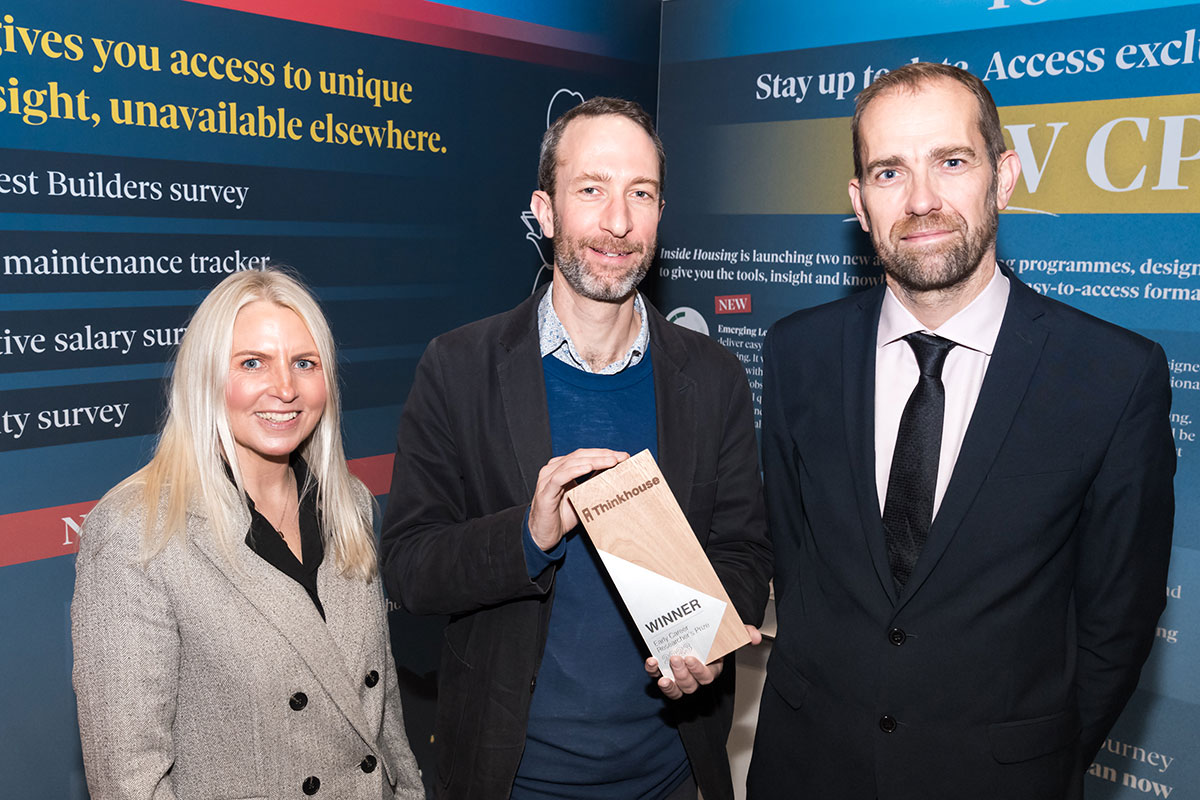You are viewing 1 of your 1 free articles
Could adjustable housing be the big idea that helps the UK thrive in the 21st century?
Late last year, Dr Philip Graham won the Thinkhouse Early Career Researcher’s Prize for his paper arguing that adjustable housing could be the answer to some of the UK’s housing problems. Martin Hilditch met him to find out why. You can also watch Jon Squire’s interview with Dr Graham in the video at the bottom of this article

In the paper that won this year’s Thinkhouse Early Career Researcher’s Prize, Dr Philip Graham sets out an alternative vision for future housing delivery in the UK.
Dr Graham is an architect at Cullinan Studio, with a PhD from the University of Reading, but the work that picked up the prize sprang out of his current three-year secondment as a postdoctoral innovation scholar in design at the University of Cambridge (funded by the Arts and Humanities Research Council, part of UKRI).
His idea? That a concept that may be unfamiliar to many readers – adjustable housing – could help the UK thrive in the 21st century and assist in creating a more user-friendly housing system.
The idea impressed the Thinkhouse judges (of which I was one) for its bold vision and clarity of argument. The prize, supported by Inside Housing and sponsored by Altair, L&Q and Aster Group, was set up by Thinkhouse to promote and encourage a new generation of researchers. The prize was open to anyone with up to eight years’ research experience, working in non-academic as well as academic institutions, and the judges based their decision on criteria including clarity of writing, engagement with literature and theory, strength of conclusions, and the extent to which the research is outcome and impact-focused.
So, what is adjustable housing and what argument does Dr Graham make for its roll-out? And what chances does he think it has of shaking up the status quo?
To answer those questions, Inside Housing sat down with Dr Graham at the end of 2023, to find out more about both the research and his plans for it during his three-year secondment.
Responding to new needs
Dr Graham’s work argues that there is a pressing need for more “adjustable” housing stock to help people cope with the demands of the 21st century.
“One of the defining characteristics of the 21st century is that our life course pathways are much more volatile than they used to be,” Dr Graham tells Inside Housing. “It used to be that you would have… a linear career, retiring at 65 with a guaranteed pension for life.”
That model of life has shifted and will continue to change, he says. “In the 21st century, what have you got? Well, first of all, AI is going to take your lunch at various points. The need to retrain will be ever present. Families quite often happen later. Care needs happen at different points.”
Then, of course, there are other impacts, such as COVID-19 lockdowns, people increasingly working from home and energy price rises.
A more volatile world and changing ways of living point to the need for a housing stock that is more responsive or adjustable to people’s changing circumstances, his paper argues.
An adjustable approach to housing would be made up of three main dimensions. The first is structural, and refers to adjustable dwellings. In essence, these would be small flats that could be joined vertically or horizontally and then divided again when extra space is no longer needed. The second dimension of the idea is adjustable equity. This, for example, could involve an individual owning one flat and renting an adjoining one, and then adjusting that balance as circumstances change. And the third dimension is adjustable infrastructure, such as shared gardens.
The example Dr Graham uses in his research is of a household that needs a two to three-bed flat to house a growing family. “Like many at their life stage, they can afford the monthly mortgage repayments, but could not have raised the deposit needed to purchase so much living space,” his paper states. “Instead, the adjustable housing model would enable them to buy their own one-bed apartment in the first instance and thereafter connect to and rent an identical flat next door.”
“The proposition is that we have a sort of checkerboard pattern on the tenure of the building,” Dr Graham says. For example, a privately owned home would have a rented home to either side and potentially above and below, too. “So, there are four opportunities to rent [additional space where needed].” Similarly, renters would have potential multiple opportunities to buy.
The result could be stock that is more responsive to people’s needs over time, reducing issues such as under-occupation by making it easier for people to downsize without having to move area or pay stamp duty.
Dr Graham admits that there is still plenty of work to be done to prove the concept and that his work so far is just a start. One of his challenges for his three-year secondment is to produce a handbook for designing, delivering and promoting adjustable housing. The handbook will describe the concept, provide some examples of similar models and then act as a manual for delivery.
Winning the Thinkhouse Prize has prompted discussions within the sector already. Conversations so far suggest that there are a number of housing providers or developers “interested in being that first mover”, Dr Graham says.
There is a long journey ahead if Dr Graham’s ambitions are to be fulfilled – but the Thinkhouse win should help start a few more of those conversations.
Inside Housing meets Dr Graham
Watch Inside Housing’s interview with Dr Graham here:
Recent Thinkhouse Review articles
Hidden consequences of the housing crisis
Research highlighting the unaffordability of UK housing compared with the rest of Europe and long-term poverty among older renters are among the must-read work from the past month, according to Francesca Albanese
Diagnosing our housing ills
Professor Ken Gibb highlights new studies that provide ammunition for anyone wishing to convince budget holders and politicians why housing should be a priority, in the latest Thinkhouse Review of the best housing research
A period of stability is needed
Steve Moseley picks out the most interesting housing research from the past month, covering the impact of freezing the Local Housing Allowance, planning policy reform and the potential savings to the NHS of quickly investing to remove damp, mould and other health hazards from our homes
Sign up for our asset management newsletter
Already have an account? Click here to manage your newsletters













